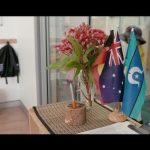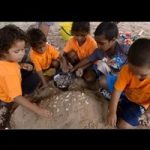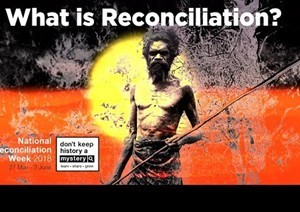3 Professional connections for Reconciliation
Anita Accendere
What is Reconciliation? Video Source: What is Reconciliation? (Hobbs, 2018).
Our Early Learning Centre, highly believes that it is critical for all Australians despite their cultural backgrounds to learn about Aboriginal and Torres Strait Islander histories and cultures (Reconciliation Australia, 2017a). Within our centre and early years curriculum we are working towards providing all students with supportive learning environments so all Australians can be taught about Aboriginal and Torres Strait Islander histories, cultures and contributions (Reconciliation, Australia, 2017a).
What is a Reconciliation Action Plan?


Importance of Reconciliation
Reconciliation is about increasing relationships between Aboriginal and Torres Strait Islander peoples and non-Indigenous peoples, that benefits all Australian’s (Reconciliation Australia, 2017c). Therefore, the RAP framework aligns with the definition of reconciliation as the framework develops relationships, values and respects opportunities in the classroom, and within the school and outside of the school community (Narragunnawali, n.d.a). The following is an example of how relationships can be supported in the classroom (Narragunnawali, n.d.a).
One way to enhance relationships within the classroom is to invite Aboriginal and Torres Strait Islander people to teach students and teachers about Aboriginal and Torres Strait Islander histories and cultures. This following video is a great way to share with non-Indigenous educators to view how Aboriginal early childhood educators embed culture in practice their kindergarten setting that enhances children’s teaching and learning regarding cultural knowledge (Queensland Department of Education, 2016). Furthermore, non-Indigenous teachers can invite Aboriginal people into the classroom to teach learning activities similar to the video such as Aboriginal stories, fishing, camping and Aboriginal languages which is often led by Aboriginal people (Narragunnawali, n.d.c; Queensland Department of Education, 2016)
Rationale
This resource will introduce how any early childhood setting can incorporate Reconciliation through everyday learning (Duncan, 2019 as cited in The Spoke: Early Childhood Australia, [ECA], 2019). Firstly, teachers and educators need to value and invest in Reconciliation using a personal approach that lays the foundation of any early childhood setting to better connect and understand Aboriginal and Torres Strait Islander ways of knowing and being (Duncan, 2019 as cited in The Spoke: ECA, 2019).
Teachers need to personally build relationships, respect and build trust between the Australian general public and the Aboriginal and Torres Strait Islander peoples (Reconciliation Australia, 2017). This resource will further explain what role teachers, educators, parents, students and the education sector and the role they will need to play to achieve a reconciled, just and equitable Australian future (Reconciliation Australia, 2017). A majority of all Australians including those from Aboriginal and Torres Strait Islander cultures and non-Indigenous cultures strongly believe that it is important for teachers, educators, families, students and the education sector to value and learn about the importance of Aboriginal and Torres Strait Islander histories and cultures (Reconciliation Australia, 2017). However, many Australians say they have very limited knowledge about the Aboriginal and Torres Strait Islander histories and cultures (Reconciliation Australia, 2017) as evident in the video above where educators and staff interviewed parents, teachers, educators and students by asking them “What does reconciliation mean to them?” (Hobbs, 2018).
Staff Engagement With RAP
One of the concerns within in our Early Learning Centre is that there is no current Reconciliation Rap Plan [RAP} program (Narragunnawali, n.d.a). This is evident in regard to the statement from a staff educator who stated, “I wish we had more opportunities to make connections, formally and informally, rather than our current option which is via virtual online email groups”. A RAP is a formal statement of commitment to reconciliation, that early learning settings can develop (Narragunnawali, n.d.a). When early learning settings develop their RAP, they must establish a RAP Working Group which involves a diverse range of members that includes teachers, non-teaching staff, parents, students and local community members (Narragunnawali, n.d.). In order to embed a Commitment to the Reconciliation Action Plan (RAP), all staff are accountable for developing and implementing the RAP framework to ensure the plan is suitable to achieve meaningful and sustainable outcomes (Narragunnawali, n.d.b).
There are four stages that all staff can be involved in which include a RAP Working Group, Reflection Survey, Vision for Reconciliation and RAP Actions (Narragunnawali, n.d.b). Once the key four stages above are completed, RAPs are submitted to the Director within an early childhood setting who then forwards the RAP to Reconciliation Australia (Narragunnawali, n.d.b). Reconciliation Australia reviews the early childhood setting RAPs Vision for Reconiliation and Acknowledgement of Country statements prior to publication (Narragunnawali, n.d.a).
Secondly, another concern within our Early Learning Centre is that a staff member stated, “A personal approach is more effective because of conversations, sharing, knowing someone personally makes meaning”.
One of the major aims of the RAP is that it facilitates professional learning which occurs on a regular basis through professional learning sessions such as staff meetings (Narragunnawali), A RAP has ideas for action, there are forty RAP Actions to select from, however, fourteen must be selected as a minimum requirement (Narragunnawali, n.d.a). Each RAP Action comes with background knowledge, activities and resources that can be used by the RAP Working Group, that facilities professional learning (Narragunnawali, n.d.b).
Links to the Educators’ Guide and the Early Years Learning Framework [EYLF]
- Culturally Competent educators acknowledge the diversity of communities and are inclusive of all family groups (Educators Belonging, Being & Becoming as cited in the Department of Education and Workplace Relations [DEEWR]. 2010, p. 19).
- Reflective Practice leads to change when educators learn together with diverse knowledge, experiences and views within group settings (DEEWR, 2010, p. 9).
- Curriculum that is culturally appropriate by including Aboriginal children and families to ensure they can actively participate and contribute their knowledge and ideas into all learning and teaching experiences (DEEWR, 2010, p. 12).
- Children are capable and competent learners (DEEWR, 2010, p. 16)
- Children can actively construct their own learning (DEEWR, 2010, p. 16)
- Learning through play is dynamic, complex and implements a holistic approach (DEEWR, 2010, p. 16)
- Children are active agents who have the rights to initiate and lead their own learning by making their own decisions (DEEWR, 2010, p. 16).
- Educators have respect for diversity to show children are connected to their world when Aboriginal traditions are embedded to enhance reconciliation into classroom learning experiences (DEEWR, 2010, p. 22).
- Educators embed cultural competence by embedding the principals of trust, respect for diversity, equity, fairness and social justice into their teaching and learning experiences (DEEWR, 2010, p. 23). This allows all children to build confidence and strength in personal and cultural identity (DEEWR, 2010, p. 23).xt


